Would you build a massive £40000 supercomputer in your living room just to play Tetris, a tile-matching puzzle video game? Well that is exactly what James Newman – who has a chemistry degree from Oxford University and a Mathematics degree from the Open University – did.
Mr. Newman’s giant processor, which measures 10 metres by 2 metres (32.8 feet by 6.56 feet), took him almost five years to build.
The supercomputer, which Mr. Newman calls his Megaprocessor, must have burned a giant hole in his pocket as well as his free time – it only plays Tetris, nothing else. Mr. Newman is clearly obsessed with the game that was created by Russian game designer Alexey Pejitnov and came onto the market on 6th June, 1984 – it has been one of the most popular games globally for the past three decades.
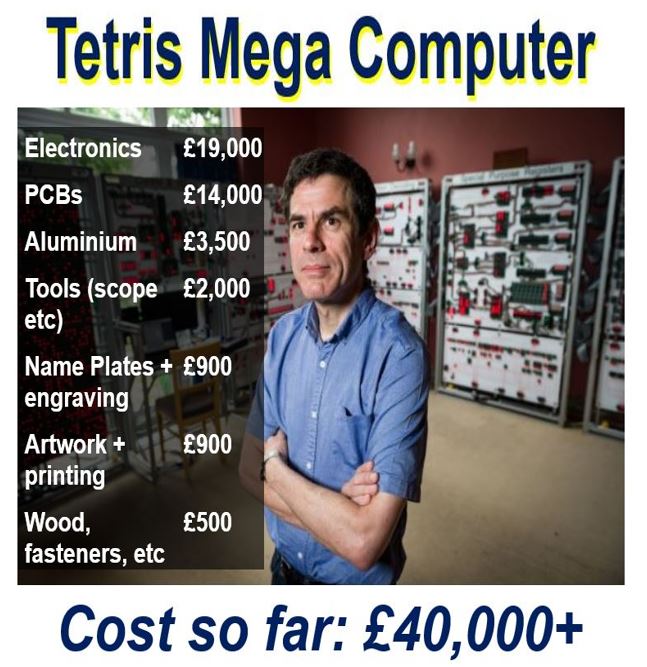 At first, Mr. Newman had something considerably smaller in mind. However, as time passed by, his ambitions became greater and the idea of a super teaching aid developed in his mind. (Image: megaprocessor.com)
At first, Mr. Newman had something considerably smaller in mind. However, as time passed by, his ambitions became greater and the idea of a super teaching aid developed in his mind. (Image: megaprocessor.com)
Mr. Newman, 55, who lives alone and works for an engineering company in Cambridgeshire, is convinced that if he did have a wife she would most likely have left him by now. He claims his mega-machine is the only walk-in teaching computer anywhere in the world.
Tetris supercomputer a teaching aid
He would like to use it as a teaching aid, specifically to show people how computers work.
Over a period of nearly five years, Mr. Newman spent about three hours after work each evening on his machine. During that time, furniture across most of his lounge was taken out to make room for his growing supercomputer.
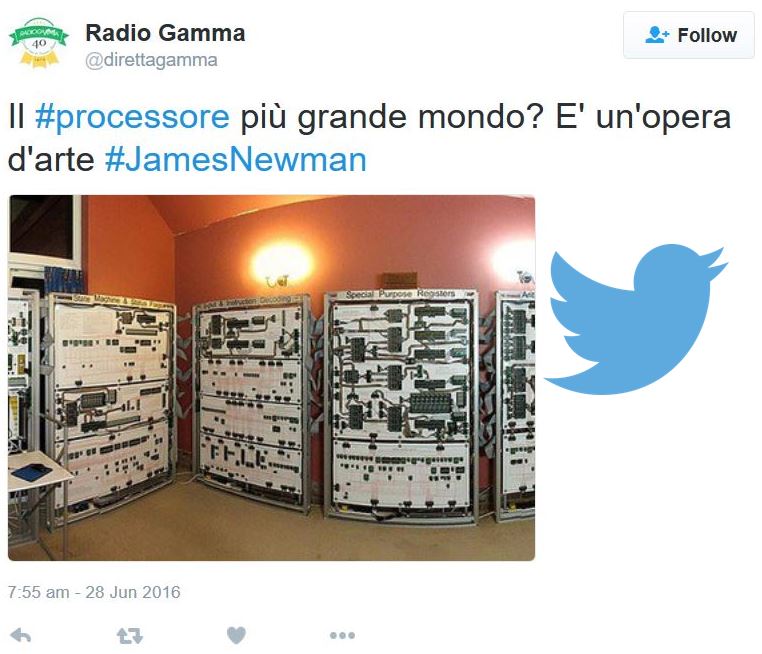 Mr. Newman’s project is frequently discussed in social media websites by enthusiasts from across the word. (Image: twitter.com/direttagamma)
Mr. Newman’s project is frequently discussed in social media websites by enthusiasts from across the word. (Image: twitter.com/direttagamma)
Initially, he had planned to spend a tiny fraction of the £40,000 ($56,000) he has so far invested. As time went by, he added, he became progressively more ambitious.
He began by building transistors – devices that switch or amplify electrical signals.
Fortunately, he has a large lounge, and so far the mega-machine has been able to expand without too many problems – he has had to place everything that used to be in his living room in his spare room.
 You would have thought that with all these impressive circuits and the machine’s amazing size, that it would have astronomical speeds and memory. You would be wrong – Mr. Newman said his device is millions of times slower than an ordinary modern laptop, and has a tiny fraction of its memory. (Image: megaprocessor.com)
You would have thought that with all these impressive circuits and the machine’s amazing size, that it would have astronomical speeds and memory. You would be wrong – Mr. Newman said his device is millions of times slower than an ordinary modern laptop, and has a tiny fraction of its memory. (Image: megaprocessor.com)
Mr. Newman plans road tours
Mr. Newman said:
“I play Tetris on it. I was looking for an example project that people could understand and Tetris seemed like a good example. In the longer term I would like to put it in a museum or go on a road tour to show people.”
Dieser Computer kostet fast 50.000 Euro. Und er beherrscht nur #Tetris. Verrückt! https://t.co/qVBfTDXxBW pic.twitter.com/SY2ODAYBHt
— GamingGadgets.de (@GamingGadgetsDE) 7 July 2016
GamingGadgets.de tweeted (in German): “This computer cost almost 50,000 euros. And it only plays Tetris. Crazy!”
“I want to show people how computers work and get children interested in electronics. I am trying to make all the levels of a computer visible from the building blocks which are the transistors and show how they are connected together.”
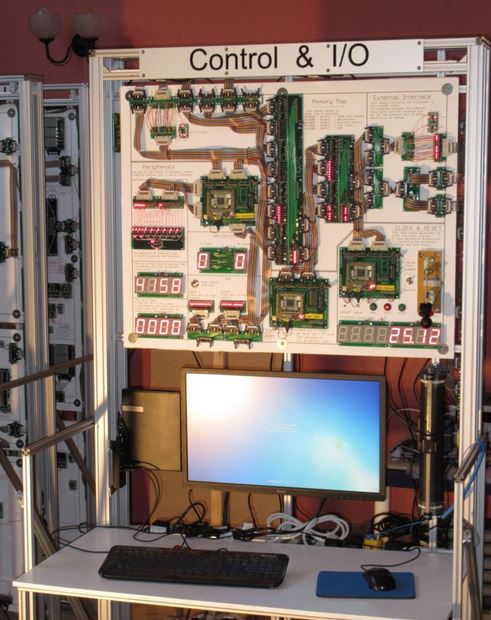 For nearly five years, Mr. Newman has been working on his ever-growing project in the evenings after work. (Image: megaprocessor.com)
For nearly five years, Mr. Newman has been working on his ever-growing project in the evenings after work. (Image: megaprocessor.com)
Even though his device is huge, it is surprisingly slow – it is considerably slower and has significantly less memory than a modern laptop. He deliberately designed it to be slow so that people could clearly observe how it works.
Why did he choose Tetris?
Mr. Newman, who lives in Great Shelford, Cambridge, explained that Mathematics is not a very exciting subject for most people, so he thought a popular game would be more fun with which to learn about computers.
Nine years ago, Tetris came in second in IGN’s 100 Greatest Video Games of All Time. By 2010, the Tetris franchise had sold over 170 million copies – about 70 million physical copies and more than 100 million copies for mobile telephones, making it the biggest-selling paid-downloaded game of all time.
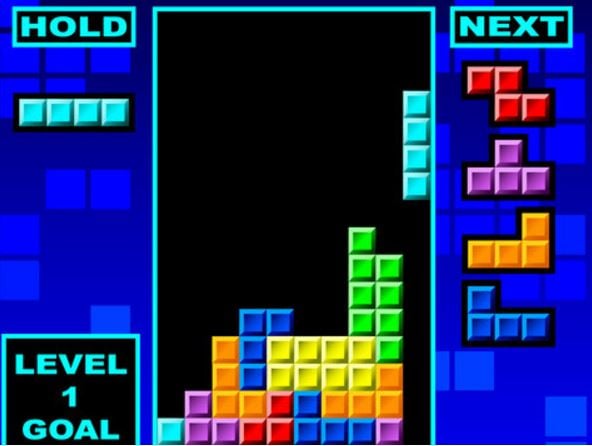 Tetris has been an extremely popular game since it came on the market in 1984. People across all age groups like playing it. (Image: dotageeks.com)
Tetris has been an extremely popular game since it came on the market in 1984. People across all age groups like playing it. (Image: dotageeks.com)
Studies have shown that prolonged Tetris playing can lead to more efficient brain activity during playing time. Brain function and activity increases during a prolonged session. Cerebral energy consumption, as measured by glucose metabolic rate, also increases.
As players get better at the game, their brains’ rate of glucose consumption goes down, suggesting more efficient brain activity while playing. A study found that people who played for 30 minutes each day for three months experienced a boost in general cognitive functions including processing, language and reasoning, as well as cerebral cortex thickness growth.
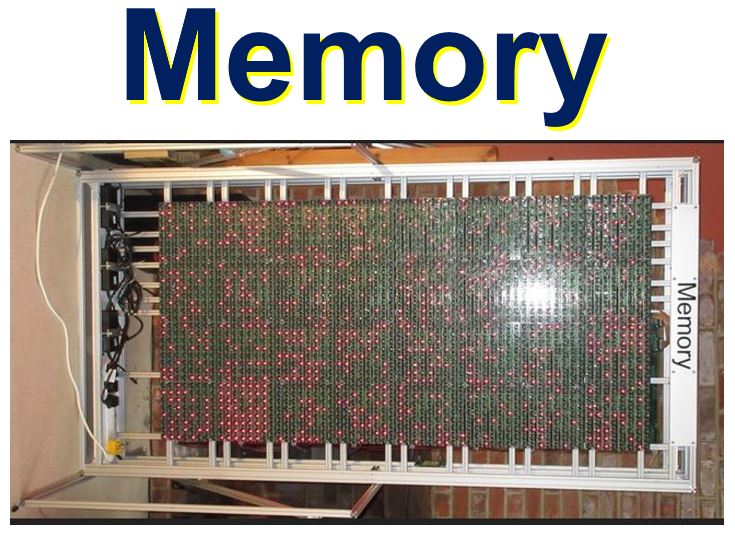 The 256 Bytes of static RAM was built with the same technology as the main processor itself – discrete transistors. Each bit of RAM comes with its own LED so that viewers can clearly see the contents of memory, so it acts as a display as well as memory. According to Mr. Newman: “It was an epic amount of work, it contains more than half the transistors of the whole project, it needed its own frame.” (Image: megaprocessor.com)
The 256 Bytes of static RAM was built with the same technology as the main processor itself – discrete transistors. Each bit of RAM comes with its own LED so that viewers can clearly see the contents of memory, so it acts as a display as well as memory. According to Mr. Newman: “It was an epic amount of work, it contains more than half the transistors of the whole project, it needed its own frame.” (Image: megaprocessor.com)
Software engineers who have been to his house have all said that his creation is marvelous. They all wished they had had access to such a wonderful teaching device when they first became interested in computers, because it would have helped them clearly see what the machines were all about.
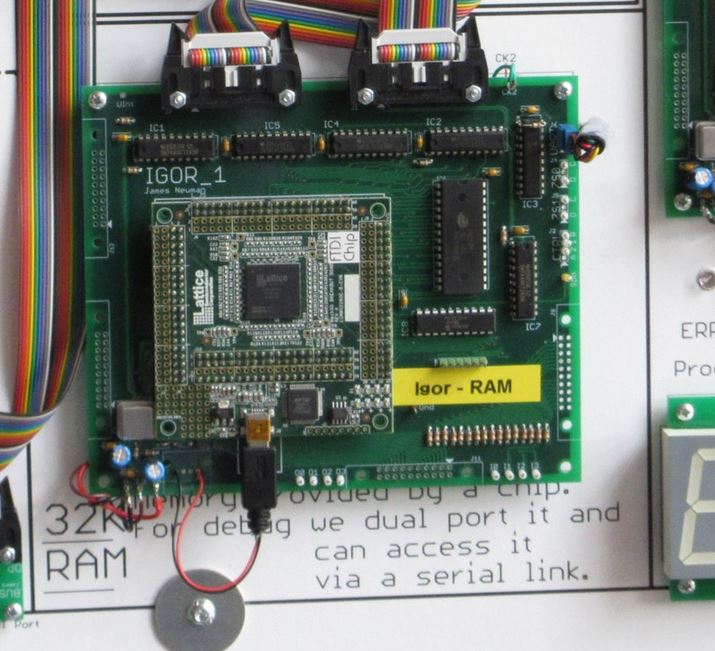 To run some programs, Mr. Newman said he added a 32kB RAM as a chip. He did this using an Igor board. He arranged it so that it was dual ported with a PIC, which allowed him to download programmes. (Image: megaprocessor.com)
To run some programs, Mr. Newman said he added a 32kB RAM as a chip. He did this using an Igor board. He arranged it so that it was dual ported with a PIC, which allowed him to download programmes. (Image: megaprocessor.com)
Regarding the Megaprocessor’s architecture, Mr. Newman writes on his website:
“The Megaprocessor is a 16 bit processor. There are four general purpose 16 bit registers: R0, R1, R2, R3. There is a program counter, PC. A register dedicated as the stack pointer SP. And a processor status register, PS.”
“For computation there is a 16 bit ALU and a 16 bit adder. The registers and compute resources are connected via multiplexors which allow the Megaprocessor to configure its data flows in different ways for different instructions.”
Video – Tetris supercomputer tour
In this video, Mr. Newman explains that he has finished building and testing the Megaprocessor.
